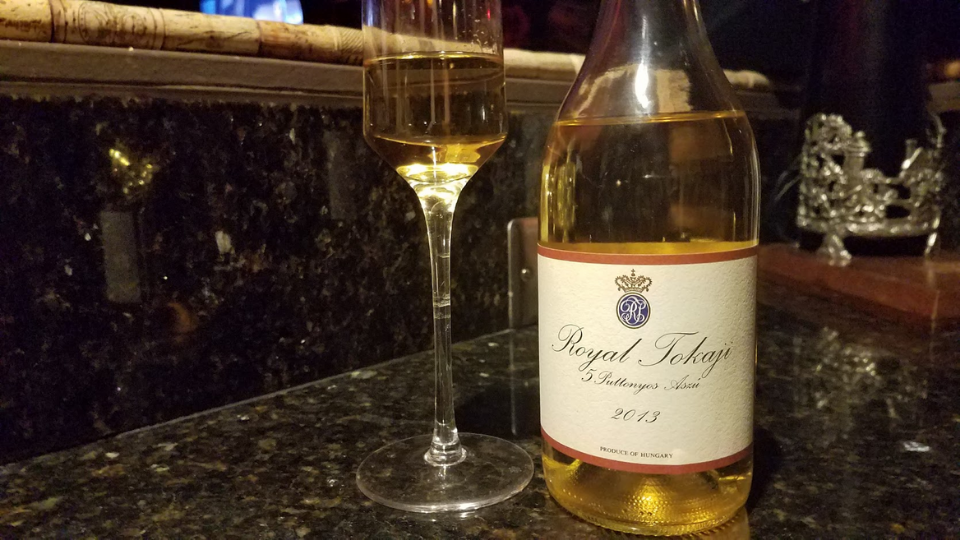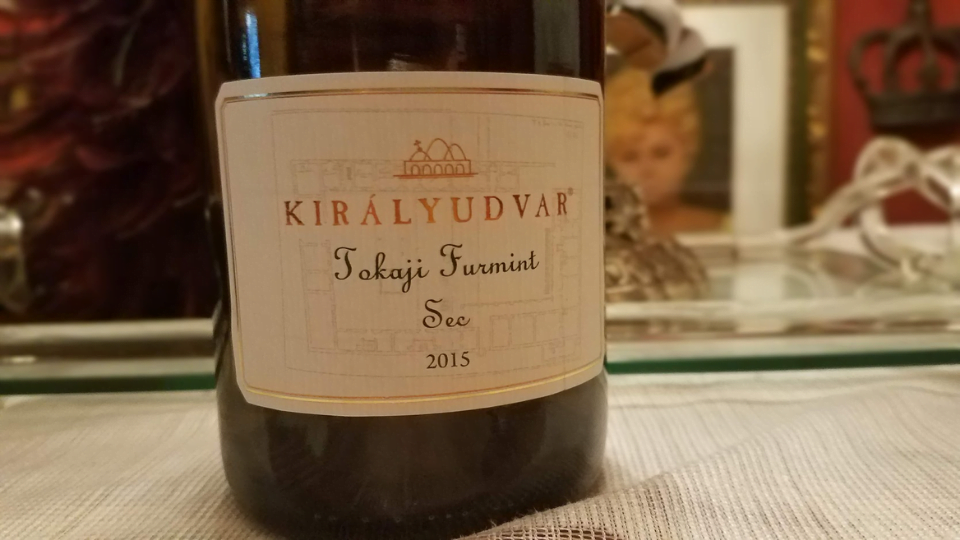KIRALYUDVAR TOKAJI FURMINT 2015
Classic late harvest Furment produced from shriveled berries untouched by botrytis from high atop Lapis vineyard. Handsome Tokaji bouquet of pink grapefruit, white lilies gives the wine a romantic touch, accented by orange blossom, beeswax. On the palate, it’s fresh, viscous with stone fruit of white peach and apricot, enveloped with a mineral core, fluid and sharp, long finish great with sea bass or pate. 95% Furmint 4% harslevelu 1% Muscat de Lunel in Hungarian oak 100% Lapis Vineyard. More wines are being vinified dry from the indigenous grapes and are matured briefly in stainless steel tanks. They will have some residual sugar and will generally last three to five years depending on the vintage.
Pair this with ribeye steak with mixed wild mushrooms tokaji reduction sauce

Pancetta wrapped Peruvian potato glazed with melted truffle cheese

ROYAL TOKAJI 5 PUTTONYOS 2013

2013 was a great vintage in Tokaji for dry or sweet wines, especially Aszu wines from botrytis affected grapes. Straw color Displaying Honey, dried pear ripe peaches, orange marmalade, citrus fruit, almond marzipan, and candied ginger elegant and delicate on the nose and graceful and refreshing on the palate, crisp long finish balanced with ample amount of acid.
Tokaji Aszu wines residual is 120
Eszencia 450
Before pressing the shriveled botrytis affected grapes, they are soaked for 16-36 hours in fresh fermenting wine or completed fermented wine. The wine is then matured under oxidative conditions without fortification, including at least two years in barrel. The second fermentation gives the wines a deep character. The classification of sweetness by the number of puttonyos is no longer part of Hungarian wine law, so as to give a more accurate measure of residual sugar. Although some older wineries such as Royal Tokaji Company refer to it.
First created in the 1600s when the harvest was delayed perhaps by war. In the 1700s, Tokaji became home to the first European region to classify its vineyards based on varied terroirs and microclimates. Ratings were applied to 1st, 2nd, and 3rd growths decreed by Prince Rakoczi of Transylvania, while the classification is still in use today. Quality ended with the Communist takeover of Hungarian winemaking. Aszu grapes were used for mass production in factories, with vineyard distinction lost in giant tanks. Tokaji renaissance began after the collapse of the Russian government’s communist control over the Comecon countries of Eastern Europe. Hungary joined the European Union and was given subsidies to recover the wine industry. In 1989 The Royal Tokaji Wine Company was created, inspired by wine author Hugh Johnson. RTWC founders started the winery in an effort to preserve a dying art.
Tokaji, Hungary’s most famous wine region is home to botrytized sweet wine, made primarily from indigenous Furmint grapes. Other indigenous grapes are authorized, mostly followed by Harslevelu. Volcanic mineral-rich soils give the wines a powerful structure along with its extreme continental climate, but the rivers that dissect the region promote the humidity for noble rot.
Pair with Meyer lemon and honeybell orange mousse in a butter sweet shortcrust pastry

Hope you enjoyed the article please comment below Love your feedback.
Thank you and remember Taste Small Live Big!
Follow me on Instagram @epicurean.angel

